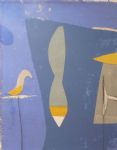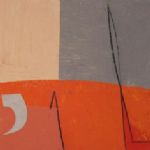CAPRICORNO GALLERY | ARTIST
Salvatore Garau Giovanni Frangi Luca Pignatelli Ercole Pignatelli Marisa Lambertini Velasco Ugo Riva Marco Petrus Soonja Han Flaminia Mantegazza Carlo Ramous Tommaso Cascella Heinrich Nicolaus Geraldina Garattoni Giovanni Calabrese Anna Maria Curto Federico Guida Daniele Peruzzi-fotografo Vittore Frattini Monica Marioni Maura Bruno Fiammetta Giuliani Michela Crisostomi DormiceTommaso Cascella
Tommaso Cascella was born in Rome in 1951, where he carried out his studies in Architecture. Today he lives and works between Rome and Bomarzo. Cascella began his research as a boy and his artistic education was passed through his family, whom are renowned artists dating back from four generations, starting with his great-grandfather, Basilio (1860), up to his mother Anna Maria Cesarini Sforza, painter and mosaic artist and his father Pietro, a very important sculptor. Following his fatherís work, Tommaso matured as an artist. From this experience the artist gave birth to a personal research beyond the form in which he explored the archaeological aspects, in order to combine its values with an abstract literary language. He had his first one man show at the Luigi De Ambrogi Gallery, in Milan (1985). Later on he travelled to India, he set up his first sculpture exhibition in Rome and participated in the XXI Biennial of Gubbio. In 1995 he was named "Academic in sculpture" by The Accademia di San Luca and one of his bronze artworks was placed in Tachikawa City, Tokyo. He participated at the XII Quadrennial of Rome with the sculpture Cielo (Sky), and at the Kaohsiung Museum of Fine Arts in Taiwan with a selection of graphic works. From 1997 to 2003 he had many personal exhibitions in Italy and abroad such as Switzerland, Germany, Slovakia, and Japan. In his works there is an intrinsic physical nature, where colour itself is form as well as representation. The artistic survey of Tommaso Cascella does not need nature or any other external reference, but it has itself, its own independent structure. Because of this, each artwork is able to hold the primary essence of painting in an overlapping continuum of elements, where iron, glue, earth, charcoal, ceramic, wood or any other material that can coexist, dialectically entering a synergistic dimension of space. In whatever way it should be noted, Cascellaís compositions are, first of all, objects that live a life of its own, always poised between sculpture and painting. Each language contains the other and can not do without it in a search that is seemingly due to traditional standards. His paintings, which are expressed through a refined use of material, are carefully placed and transposes the work in a three-dimensional way, just like in his bronze sculptures. Cascella's paintings do not have a beginning nor an end, neither high nor a low, there is no centre or an edge. They must be understood in their entirety, as places of painting. The colours are the clay, the earth, the heavens and the walls of Romanesque churches. His abstract compositions are full of universal symbols and meanings that underlie a narrative. The black signs of their alphabets become signals and architectures by unpredictable developments. Over time, the Roman artist has managed to conquer a freedom that now makes it possible for him to travel undisturbed through the soils of memory and to quote, almost coyly, his most beloved artists: Mark Rothko, Osvaldo Licini, Alberto Giacometti, Paul Klee, never losing his strong artistic identity.


